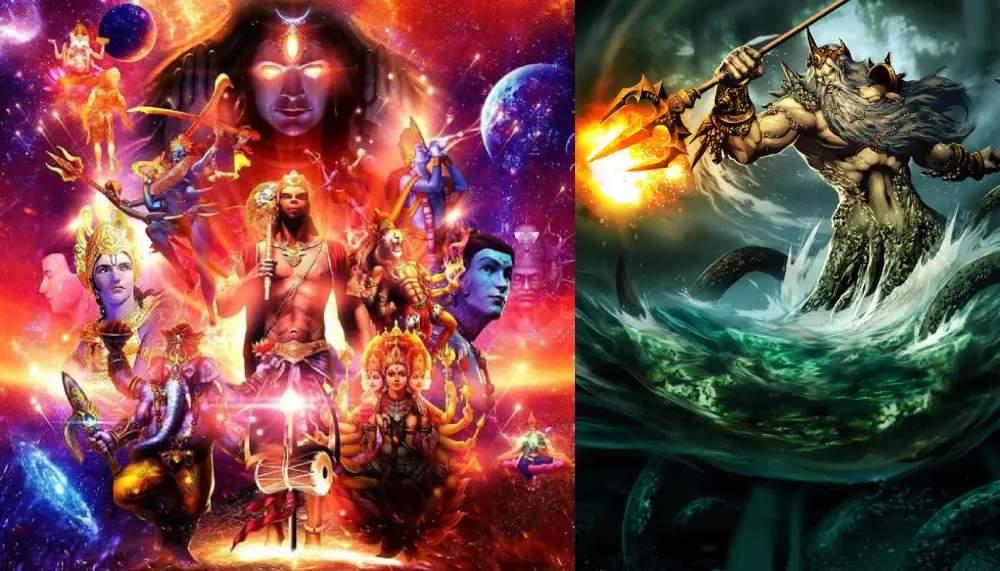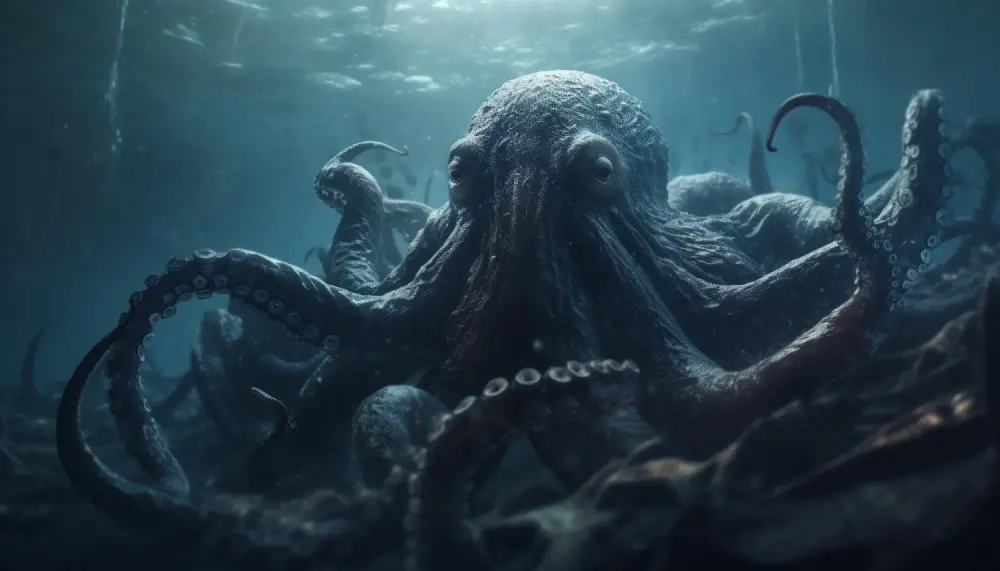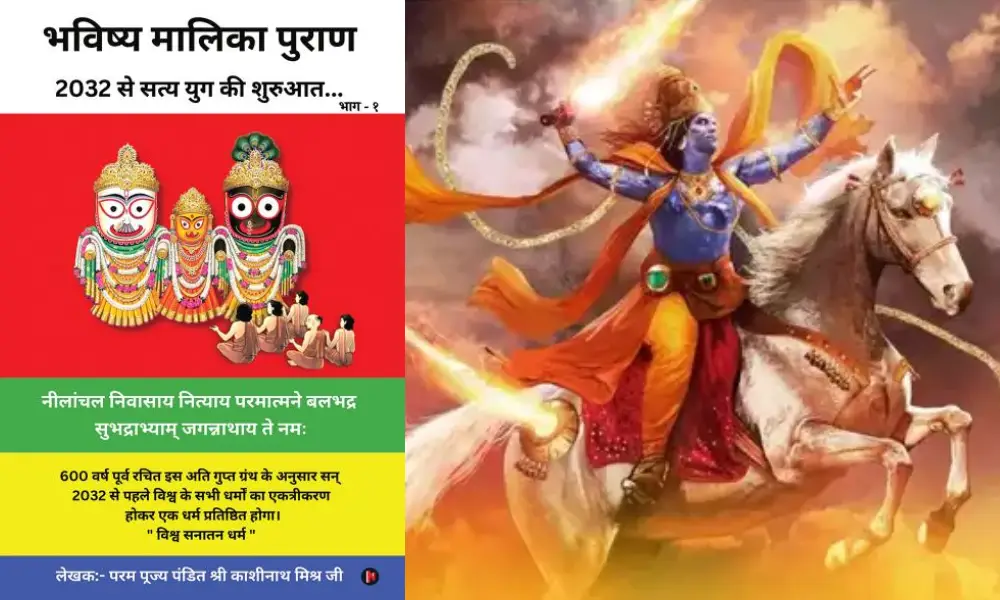Hindu mythology and Greek mythology are two distinct bodies of mythology that have their roots in ancient civilizations. Despite their differences, there are also many similarities between the two mythologies, including their stories about gods and goddesses, explanations for natural phenomena and cultural customs, and hero figures who undertake quests or perform feats of bravery.
1. Zeus vs Indra
Zeus and Indra are two deities who appear in different mythologies. Zeus is a god in Greek mythology, while Indra is a god in Hindu mythology. Both Zeus and Indra are associated with power and strength, and they play important roles in the myths and stories of their respective cultures.
The King of the gods in Greek mythology is often depicted as a powerful and mighty ruler. He is associated with thunder and lightning and is often depicted holding a lightning bolt as a symbol of his power. Zeus is also associated with justice and law and is often depicted as a fair and just ruler.
In Hindu mythology, Indra is a god who is associated with power and strength, as well as with thunder and lightning. He is often depicted as a warrior god, and is sometimes referred to as the "king of heaven." Indra is also associated with rain and fertility and is often depicted holding a thunderbolt or a weapon.
Both Zeus and Indra are central figures in their respective mythologies, and they play important roles in the stories and legends of their cultures. While there are many differences between the two deities, they both represent power and strength, and they are both associated with thunder and lightning.
2. Achilles vs Karna
Achilles and Karna are two characters who appear in different mythologies and epic stories. Achilles is a hero in Greek mythology, while Karna is a hero in Hindu mythology. Both Achilles and Karna are known for their strength and bravery, and they play important roles in the myths and stories of their respective cultures.
Achilles is a hero of the Trojan War in Greek mythology and is known for his great strength and bravery. He is the son of the mortal Peleus and the nymph Thetis and is considered the greatest warrior of his time. He is known for his invincibility, as it was prophesized that he would not be able to be killed. However, he was ultimately killed when Paris, the prince of Troy, shot him in the heel with an arrow, which was the only part of his body that was vulnerable.
Karna is a hero in Hindu mythology and is known for his strength and bravery. He is the son of the sun god Surya and princess Kunti and is considered one of the greatest warriors of his time. he is known for his unwavering loyalty and sense of justice, and he is often depicted as a selfless and noble hero.
3. The Trojan War vs Ramayana
The Trojan War and Ramayan share yet another striking similarity. These two major conflicts were waged on behalf of women.
The Trojan War broke out when Helen fled Paris, while the Ramayana happened after Ravana abducted Sita.
The Trojan War and the Ramayana are two epic stories that have their roots in ancient civilizations. The Trojan War is a story from Greek mythology, while the Ramayana is a story from Hindu mythology. Both stories involve complex conflicts and involve a large cast of characters, and they both have a lasting influence on the cultures and traditions of their respective societies.
The Trojan War is a story from Greek mythology that involves a conflict between the city of Troy and a coalition of Greek states. The conflict is sparked by the abduction of Helen, the wife of the Greek king Menelaus, by Paris, a prince of Troy. The Greeks launch a massive expedition to reclaim Helen, and the conflict culminates in a long and brutal war that ultimately leads to the fall of Troy. The Trojan War is one of the most famous stories in Greek mythology and has had a lasting influence on Western literature and culture.
The Ramayana is an epic story from Hindu mythology that tells the story of Rama, a prince who is considered an avatar of the god Vishnu. Rama is married to Sita, a princess who is abducted by the demon king Raavana. Rama embarks on a quest to rescue Sita and ultimately defeats Raavana in a great war. The Ramayana is one of the most influential stories in Hindu mythology and is considered one of the foundational texts of Hinduism.
The Trojan War and the Ramayana are two epic stories that have their roots in ancient civilizations and have had a lasting influence on the cultures and traditions of their respective societies. While there are many differences between the two stories, they both involve complex conflicts and involve a large cast of characters.
4. The Holy Trinity
The concept of the holy trinity, or the idea of a triune deity, appears in different religions and mythologies around the world. In Hindu mythology, the concept of the holy trinity is represented by the Trimurti, which consists of the three major deities Brahma, Vishnu, and Shiva. In Greek mythology, the concept of the holy trinity is represented by the three major deities Zeus, Poseidon, and Hades.
In Hindu mythology, the Trimurti represents the three main aspects of the divine. Brahma is the creator god, Vishnu is the preserver god, and Shiva is the destroyer god. The Trimurti represents the cyclical nature of existence, with Brahma representing creation, Vishnu representing preservation, and Shiva representing destruction and renewal.
In Greek mythology, the three major deities Zeus, Poseidon, and Hades represent different aspects of the divine as well. Zeus is the king of the gods and is associated with thunder and lightning, Poseidon is the god of the sea and earthquakes, and Hades is the god of the underworld. The three deities are often depicted as a triad, with each one representing a different aspect of the divine.
The holy trinity appears in different religions and mythologies around the world, and it is often represented by a group of three deities who are associated with different aspects of the divine. In Hindu mythology, the Trimurti represents the three main aspects of the divine, while in Greek mythology, the three major deities Zeus, Poseidon, and Hades represent different aspects of the divine.
5. Hades vs Yama
In many cultures and belief systems, Hades and Yama are figures associated with death and the underworld.
Hades is the Greek god of the underworld, often depicted as a shadowy figure who presides over the realm of the dead. In Greek mythology, Hades is the son of Cronus and Rhea, and the brother of Zeus and Poseidon. He is often depicted as a stern and unfeeling figure but is also sometimes depicted as fair and just in his judgment of the souls of the dead.
Yama is a figure from Hindu and Buddhist mythology who is associated with death and the underworld. In Hindu mythology, Yama is the god of death and the first mortal to die. In Buddhist mythology, Yama is the lord of the underworld and the judge of the dead, who determines the fate of souls based on their actions in life. Yama is often depicted as a fearsome figure but is also sometimes depicted as a wise and fair judge.
Hades and Yama are figures who represent the end of life and the transition into the afterlife in their respective belief systems.
6. Saptarishis vs The Seven Sisters
The Saptarishi (also known as the Seven Sages) are a group of seven rishis (sages or seers) in Hindu mythology who are believed to have contributed to the creation and preservation of the Vedas, the oldest scriptures of Hinduism. The Saptarishi is said to have been the first sages to receive knowledge of the Vedas directly from the divine source. They are also associated with the creation of the Hindu calendar and the Vedic system of astrology.
The Pleiades sometimes referred to as the Greek Seven Sisters, are a collection of seven stars that make up an eye-catching cluster in the constellation Taurus. The Seven Sisters were the offspring of the Titan Atlas and the sea nymph Pleione in Greek mythology. They were pursued by the hunter Orion and were transformed into stars to escape him. The Seven Sisters are often depicted in art and literature as a group of beautiful young women.
While the Saptarishi and the Greek Seven Sisters are both groups of seven figures who are revered in their respective cultures, they are not directly related and come from different mythologies.
7. Icarus vs Sampati
Icarus and Sampati are figures from Greek and Hindu mythology, respectively.
Icarus is a figure from Greek mythology who is best known for his tragic story of flying too close to the sun with wings made of feathers and wax. In the story, Icarus ignores his father's warning not to fly too close to the sun, and as a result, the wax in his wings melts and he falls into the sea and drowns. The story of Icarus is often used as a cautionary tale about the dangers of overreaching and disobedience.
Sampati is a figure from Hindu mythology who is associated with the Garuda, a mythical bird-like creature that is considered a divine being in Hinduism. Sampati is the elder brother of the Garuda and is known for his great strength and size. In one story, Sampati is said to have flown so high that he almost reached the sun, but he burned his wings and fell to the ground. However, he was able to regain his strength and fly again and is revered as a powerful and majestic figure in Hindu mythology.
Icarus and Sampati are figures known for their association with flight and the sun, but they come from different mythologies and have different stories and significance in their respective cultures.
8. Hermes vs Narada
Hermes and Narada are figures from Greek and Hindu mythology, respectively.
Hermes is the Greek god of commerce, thieves, travelers, and communication. He is often depicted as a messenger of the gods and a patron of travelers and is known for his speed and cunning. In Greek mythology, Hermes is the son of Zeus and the nymph Maia and is often depicted as a youthful and mischievous figure.
Narada is a figure from Hindu mythology who is known as a wandering sage and messenger of the gods. He is often depicted as a wise and powerful figure who travels between the earthly realm and the divine realm, carrying messages between the gods and humans. In Hindu tradition, Narada is said to be an embodiment of divine will and is revered as a great spiritual teacher and guide.
Hermes and Narada are figures associated with communication and travel, but they come from different mythologies and have different stories and significance in their respective cultures.
9. Sita and Persephone
Sita and Persephone are figures from Hindu and Greek mythology, respectively.
Sita is a central figure in the Hindu epic Ramayana, in which she is the wife of prince Rama and the embodiment of virtue and devotion. Sita is known for her faithfulness, beauty, and strength, and is revered as a symbol of the ideal woman in Hindu tradition. In the Ramayana, Sita is abducted by the demon king Ravana and held captive in his kingdom, but is ultimately rescued by Rama and returns home with him.
Persephone is a figure from Greek mythology who is associated with the underworld and the seasons. She is the daughter of Zeus and the harvest goddess Demeter and is known for her beauty and power. In the myth of Persephone, she is abducted by Hades, the god of the underworld, and taken to his realm to be his queen. As a result of her abduction, Demeter, who is Persephone's mother and the goddess of agriculture, withdraws her blessings from the earth, causing a period of darkness and cold known as winter. Eventually, a deal is struck between Zeus, Demeter, and Hades, and Persephone is allowed to return to the earthly realm for part of the year, bringing with her the spring season.
Sita and Persephone are figures associated with abduction and the power of the earth, but they come from different mythologies and have different stories and significance in their respective cultures.
10. Shiva vs Dionysus
Shiva and Dionysus are figures from Hindu and Greek mythology, respectively, who are associated with different aspects of the natural world and human experience.
Shiva is a major deity in Hinduism, revered as the supreme god and a symbol of destruction and renewal. In Hindu mythology, Shiva is often depicted as a powerful and majestic figure who is associated with the elements of the natural world, including the mountains, rivers, and forests. Shiva is also associated with the power of transformation and is revered as a god of destruction and renewal who helps to bring about change and growth.
Dionysus is the Greek god of wine, fertility, and celebration. He is often depicted as a youthful and joyful figure and is associated with the natural world and the cycle of life. In Greek mythology, Dionysus is the son of Zeus and a mortal woman and is revered as a god of transformation and renewal. He is also associated with the power of the grape and is often depicted holding a cup of wine or a cluster of grapes.
Shiva and Dionysus are figures associated with the natural world and the cycle of life, but they come from different mythologies and have different stories and significance in their respective cultures.
More About...
Hindu mythology and Greek mythology is that both contain stories about gods, goddesses, and other supernatural beings. In Hindu mythology, the pantheon of deities includes many gods and goddesses who are associated with specific aspects of life, such as Vishnu, the preserver of the universe, and Shiva, the destroyer. The Greek pantheon, on the other hand, includes gods such as Zeus, the king of the gods, and Athena, the goddess of wisdom and war. Both mythologies also contain stories about creation, the cycle of life and death, and the afterlife.
Hindu mythology and Greek mythology contain stories about the creation of the universe. In Hindu mythology, the creation story is told in the Rig Veda, one of the oldest sacred texts of Hinduism. According to this myth, the universe was created out of a cosmic egg, and the gods emerged from it to create the world and all living beings. In Greek mythology, the creation story is told in the Theogony, a poem by the ancient Greek poet Hesiod. According to this myth, the universe was created out of Chaos, and the first gods and goddesses emerged from it.
Hindu mythology and Greek mythology are two distinct bodies of mythology that have their roots in ancient civilizations. While there are many differences between the two mythologies, there are also many similarities, including their stories about gods and goddesses, explanations for natural phenomena and cultural customs, and hero figures who undertake quests or perform feats of bravery.





